Trees come in many different varieties, shapes and sizes, but there are some that have become so iconic that we know them by name. Whether it’s because they’ve got an impressive historical connection or because of their striking form, our list of trees and woodland areas are certainly worth a visit.
Here is our guide to the UK's most iconic and famous ancient trees, from amazing oaks to stand-out sycamores, with a brief look at the history of each tree and where to find it.
If you fancy learning more about British tree species our handy identification guide is a good place to start, alternatively not take a walk through some of Britain's best forests and woodlands.
Ancient trees in England
The Major Oak, Sherwood Forest, Nottinghamshire
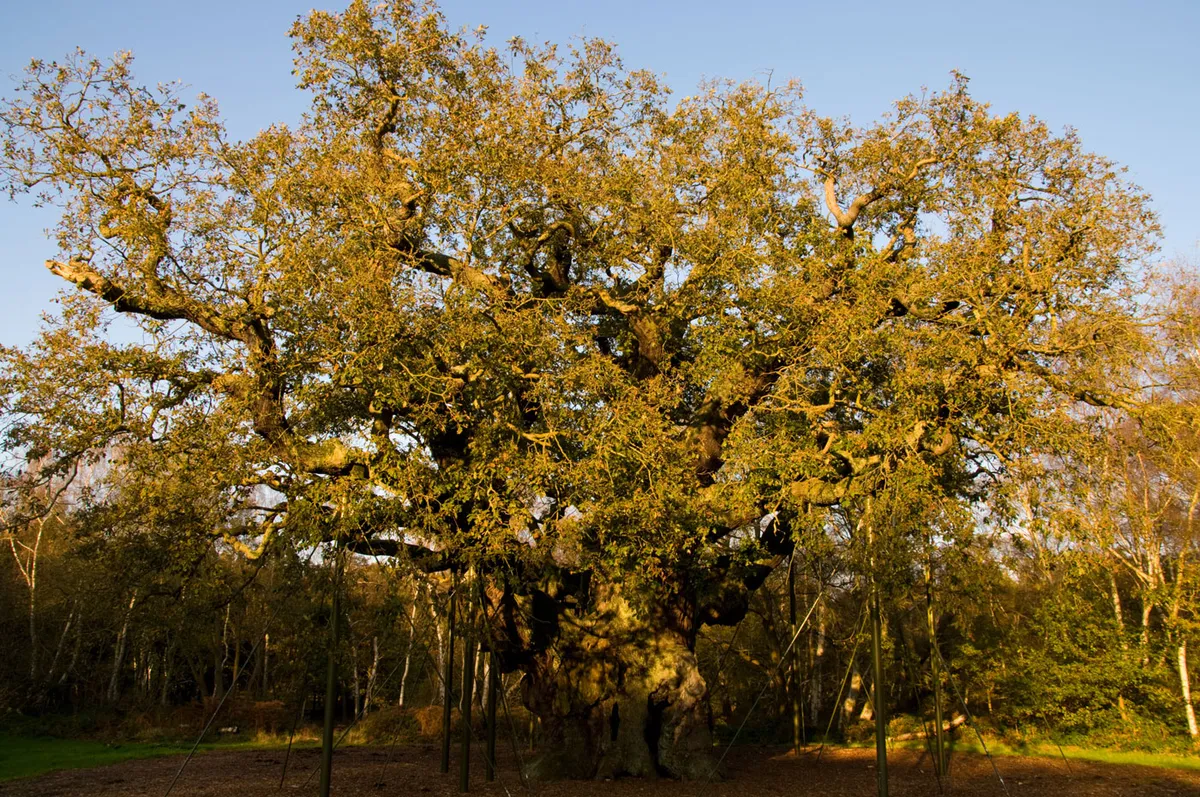
Possibly the most famous tree in the whole of the UK, The Major Oak’s hollow trunk was supposedly used as a hideout by Robin Hood’s merry men. While tree dating has suggested this is not possible, as the tree would have been only a sapling when Robin Hood was around 800 years ago, Sherwood Forest is still a magical place to visit.
Day out: Major oak, Nottinghamshire
Sycamore Gap, Northumberland
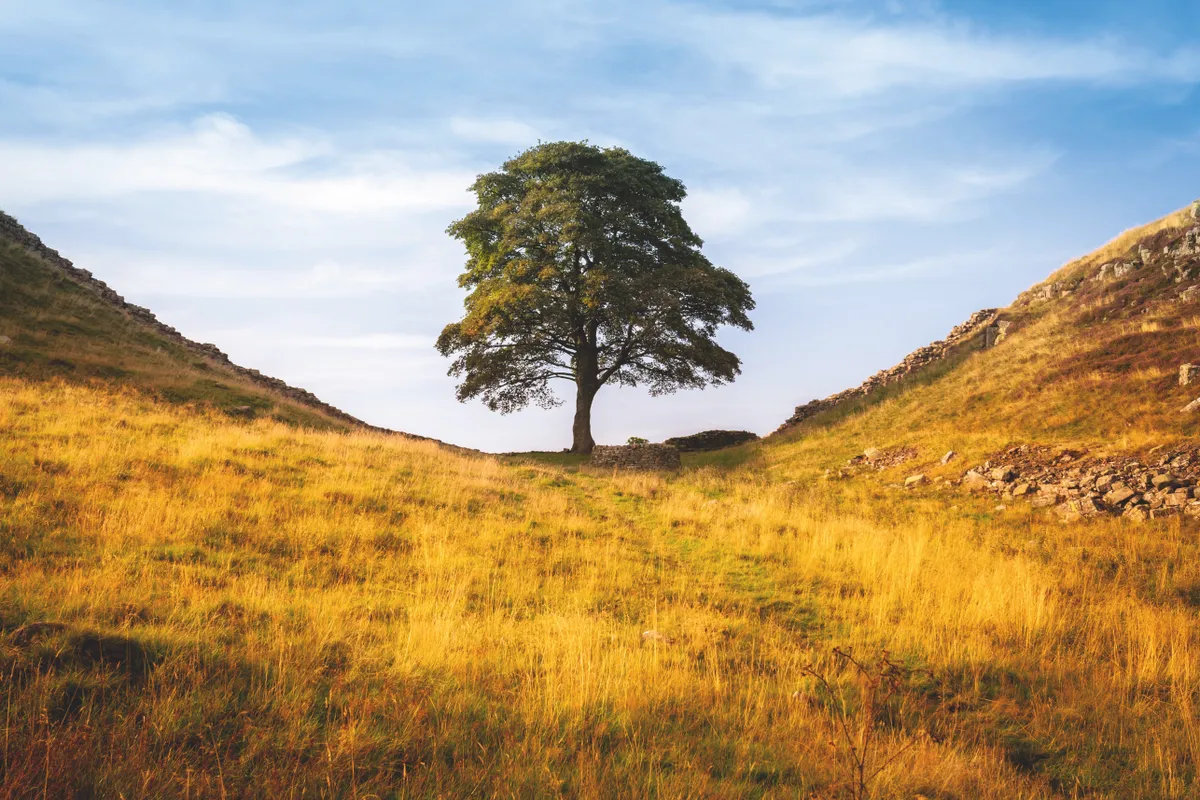
Also known as the ‘Robin Hood’ tree following its appearance in the 1991 film Robin Hood: Prince of Thieves. Sycamore Gap is one of the most photographed trees in the UK. It’s easy to see why as it grows in a dramatic dip alongside Hadrian’s Wall in Northumberland. It was also named England’s ‘Tree of the Year’ in 2016.
Queen Elizabeth Oak, Hatfield, Hertfordshire
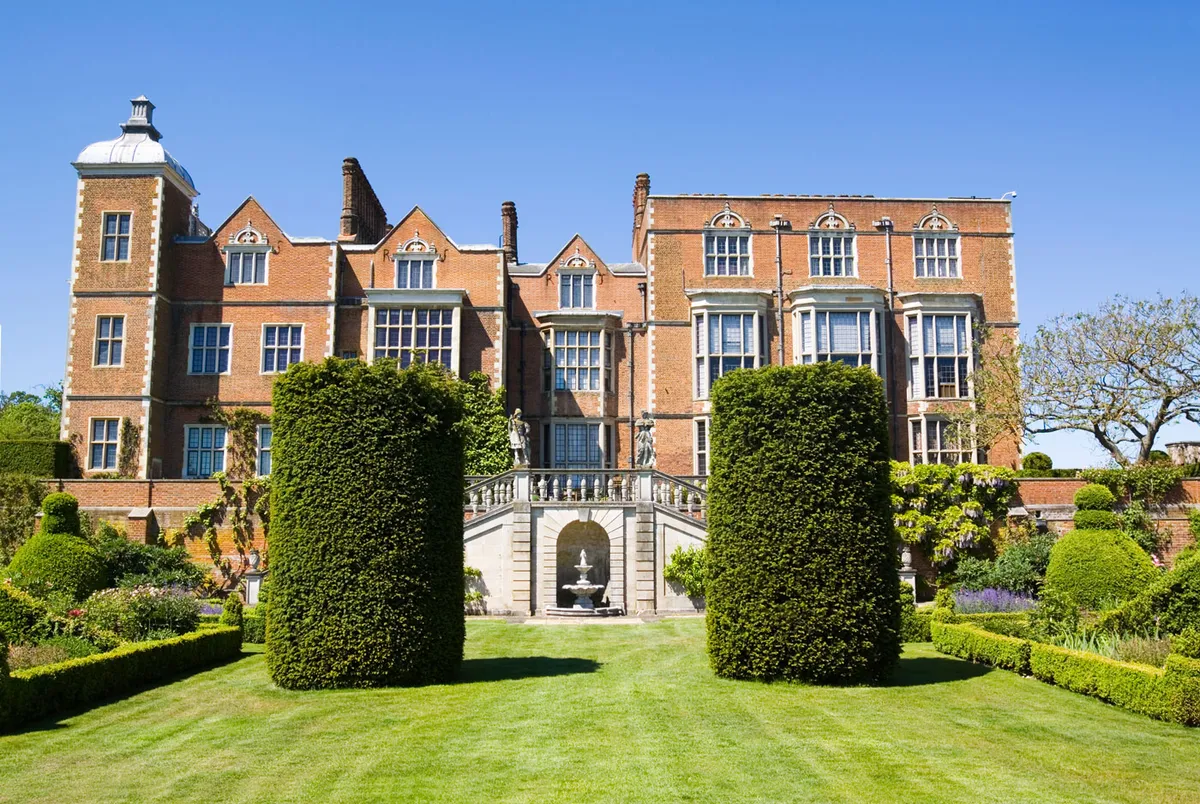
This is the tree Elizabeth I was reportedly sat under when she heard the news of her sister Mary’s death. This momentous occasion meant that she was freed from her imprisonment and now Queen of England. This story has been questioned, but situated in the grounds of Hatfield House where Elizabeth stayed, it’s more than likely she made a number of visits to the tree.
The Trees of Dartmoor, Devon
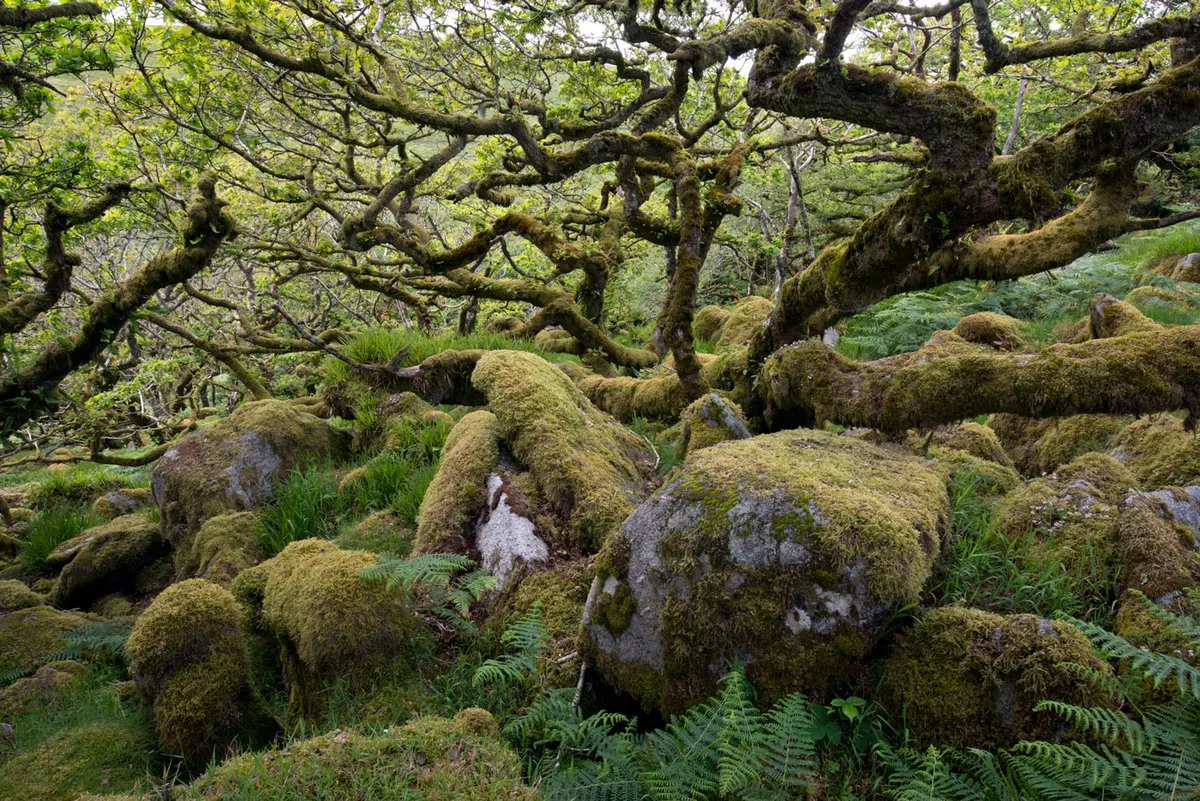
Lone hawthorns contorted into shapes by the wind have become iconic images of Dartmoor. Just as striking are its old oak forests, such as Wistman’s Wood, Black-a-tor copse and Piles Copse, where the wild branches of the gnarled trees splay out in all directions. Often found on the sheltered sides of steep valleys, these rocky woodland areas provide the perfect environment for lichen and ferns to thrive.
The Horror Tree, Stowlangtoft, Suffolk
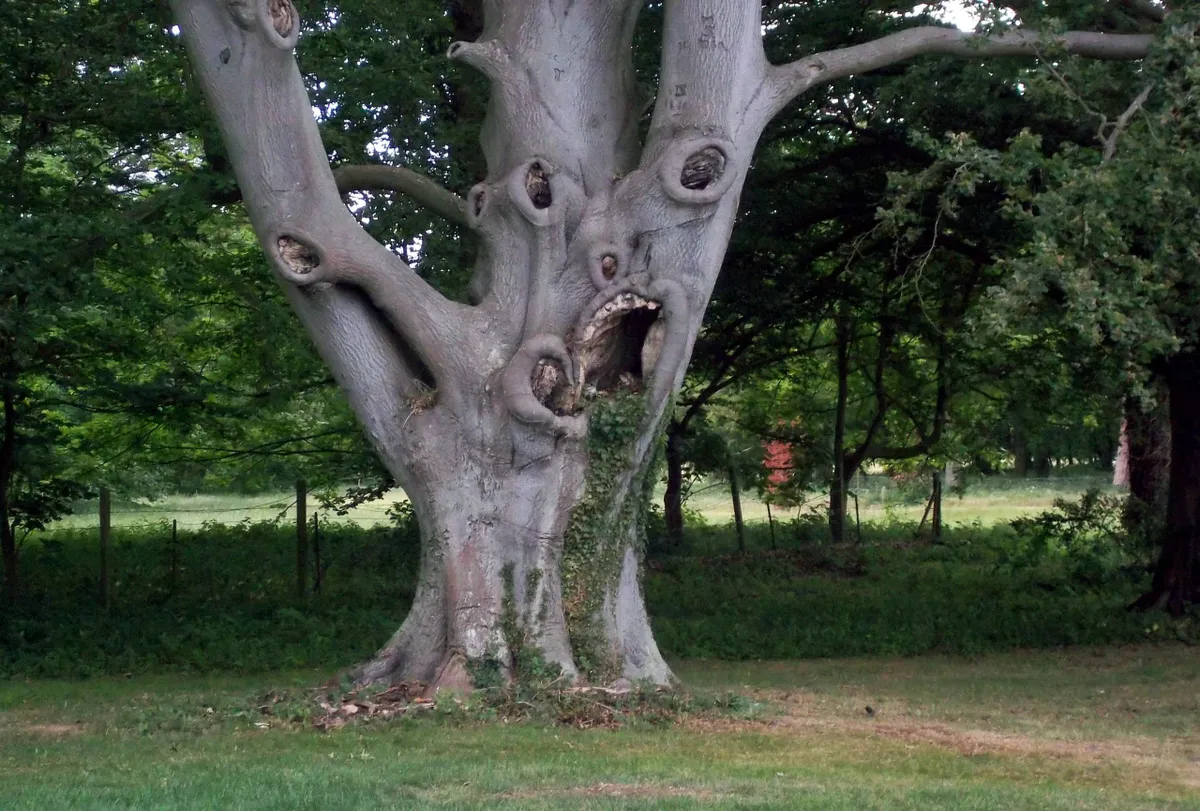
In recent years, the care home for the elderly at Stowlangtoft Hall has attracted many visitors. However, not all are there to see the residents, but instead to see a particular tree which has a terrifying face present in the side of it. With its bulging eyes, wide-open mouth and massive teeth, it looks as though the tree is screaming.
Savernake Forest, Wiltshire
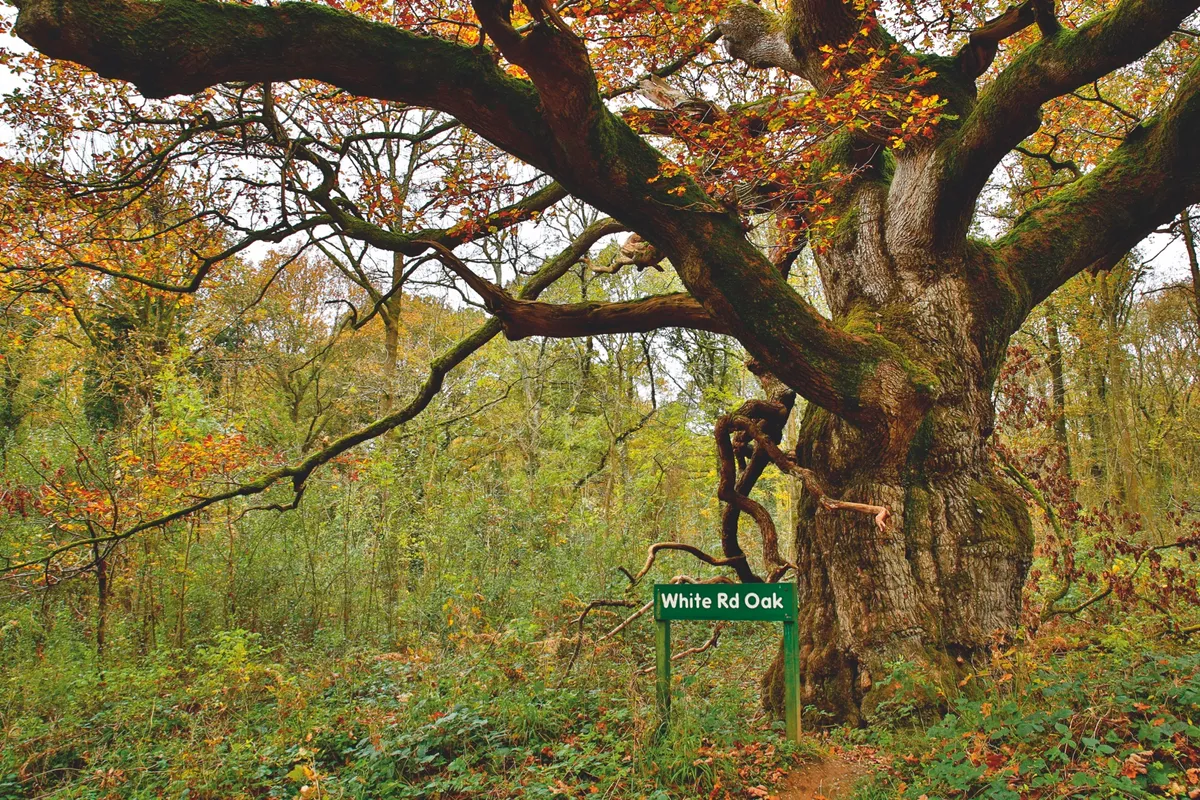
A few miles south of the historic town of Marlborough lies a sprawling 2,750-acre forest, once a popular hunting area where royalty chased stags past trees that still stand today. Savernake is now in private ownership (but open to the public and managed by the Forestry Commission) and is believed to hold the highest concentration of veteran trees in Europe. Several of these specimens have been bestowed with names that reflect their age and history, including the imposing White Road Oak.
Linley Beeches, Shropshire

The aged beech trees that stand tall on Linley Hill in Shropshire are the jewels in an arboreal crown in the quiet Welsh Borders.
Walk: Linley Beeches, Shropshire
Ankerwycke Yew, Runnymede, Berkshire
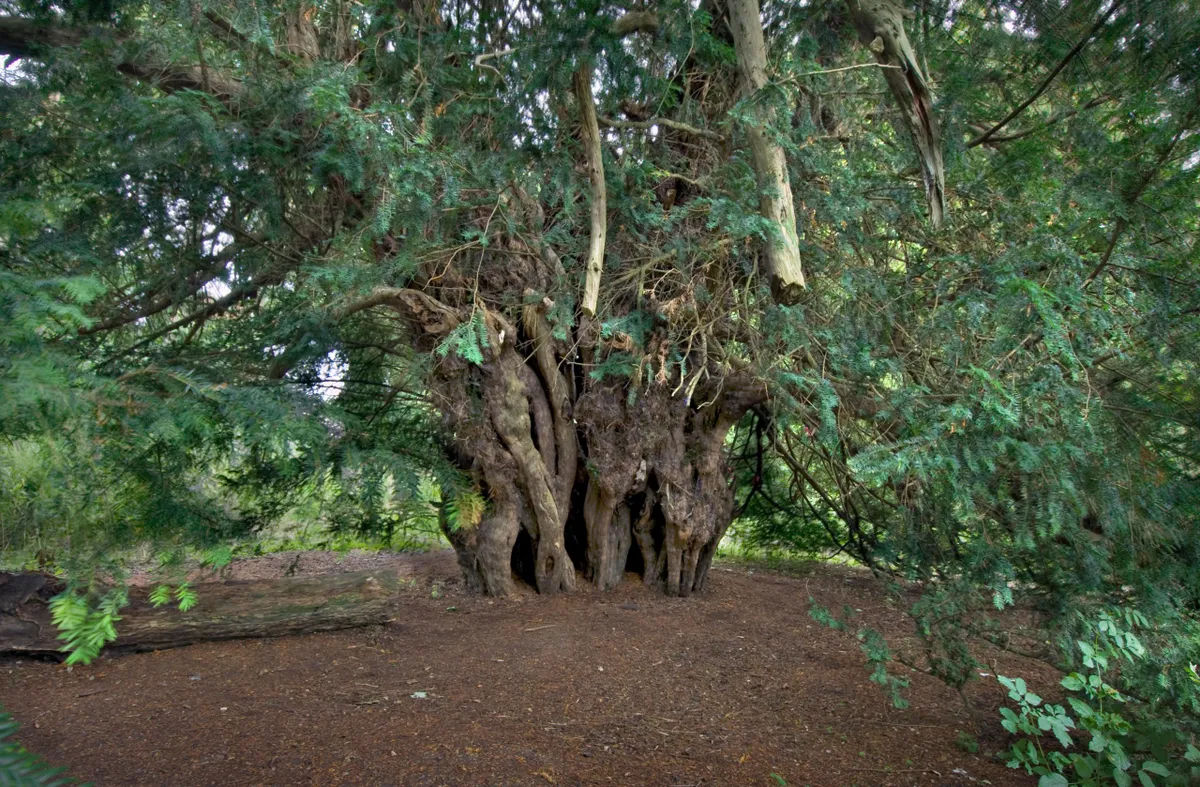
If only trees could talk, this ancient yew would have plenty to tell us! A remarkable 2,500 years old, Ankerwycke Yew is the National Trust’s oldest tree and, according to popular belief, Henry VIII courted Anne Boleyn beneath its branches.
Brief history of Britain’s ancient yews
Worshipped as well as feared, Britain’s ancient yews are among the oldest living things on the planet. Learn about these impressive trees, plus discover the oldest yews to visit in the UK in our historic guide.
Kingley Vale, West Sussex
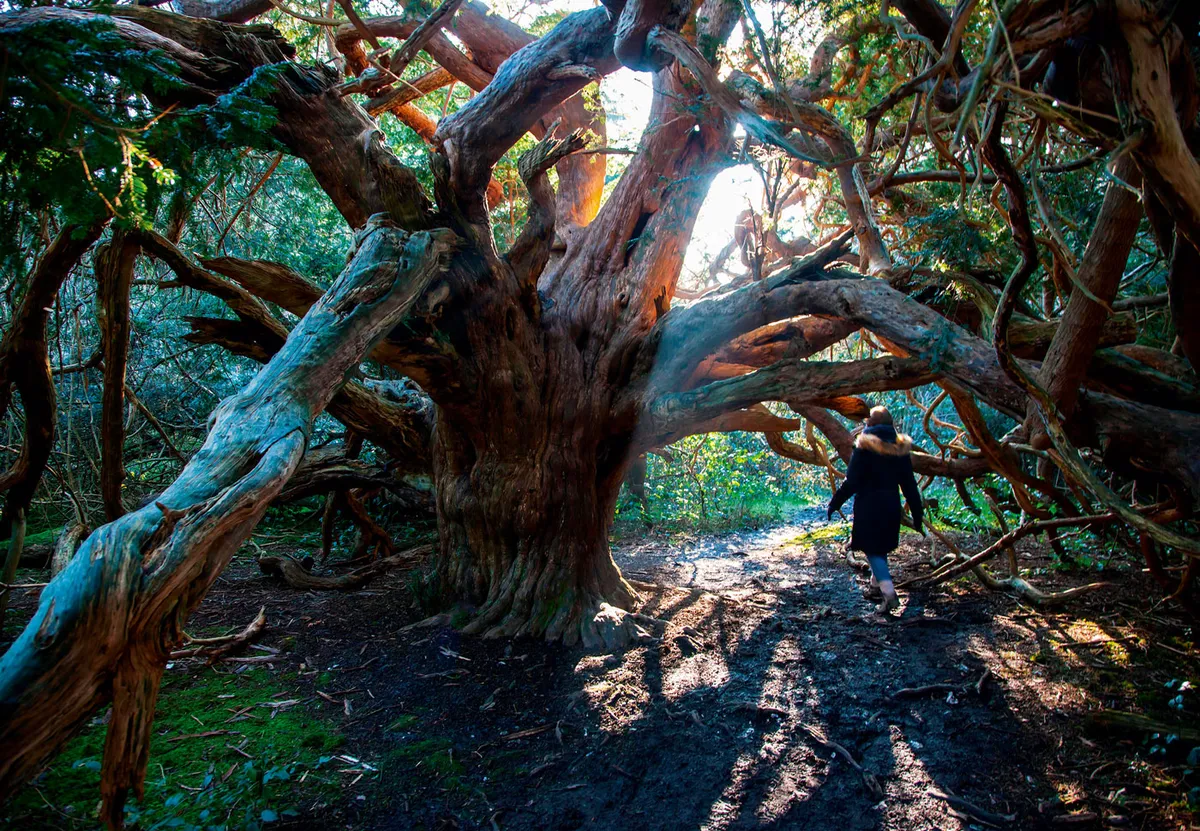
Traditionally, the strong, springy timber of the yew was used to make the longbows that defeated the French in the battles of Crécy, Poitiers and Agincourt. But Kingley’s yews suffered even worse at the hands of British and Canadian troops, who used them for target practice when they were rehearsing for the D-Day landings in 1944.
However, the yews should now be safe, being located in the UK's newest National Park: the South Downs. Above Grigson’s “black-tufted density” of the yew forest, four Bronze Age tumuli, known as the Devil’s Humps, crown the chalky downland of the significantly named Bow Hill (206m). The views from here, towards the sparkling waters of the English Channel and the floating blue outline of the Isle of Wight, are stunning
The Flower of Kent Tree, Lincolnshire
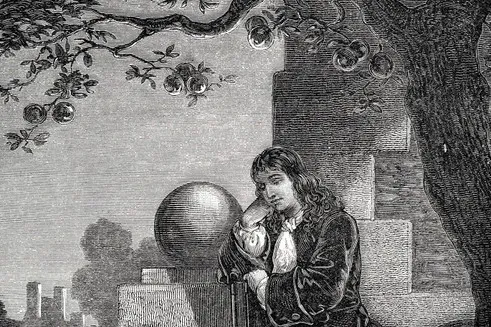
Sir Isaac Newton’s discovery of gravity is one of the most significant moments in scientific history, and this is the apple tree that made it all happen. Standing in the grounds of Woolsthrope Manor, the tree is now surrounded by a low willow barrier erected by the National Trust to protect it.
Old Knobbley, Mistley, Essex
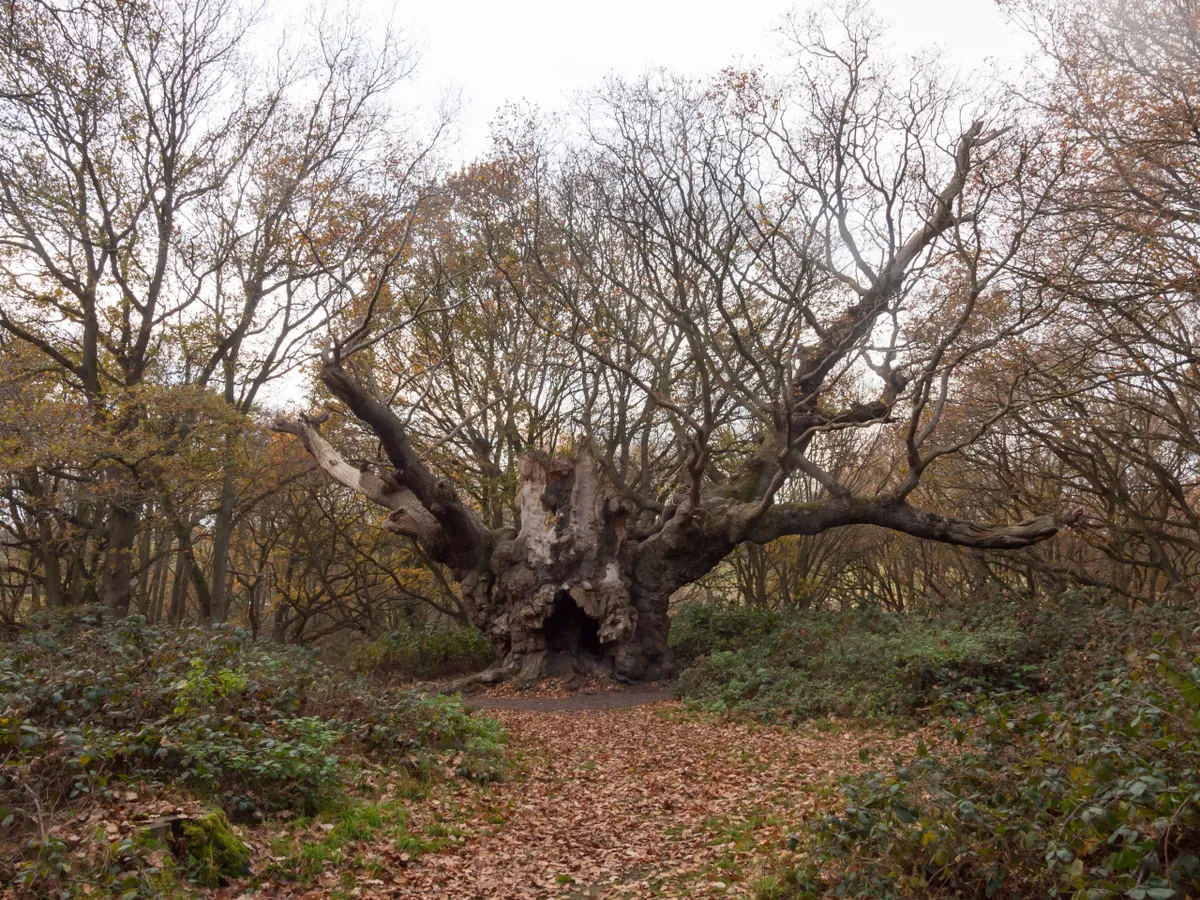
Time for something a little more sinister – Old Knobbley in Mistley, Essex, dates back to the 13th Century and could have been a sanctuary for hunted witches. The Mistley area of Essex was home to ‘Witch-finder General’ Matthew Hopkins in the 17th Century and it’s understood that many accused ‘witches’ would have sought refuge in its boughs.
The Victorian Plane, Berkeley Square, London
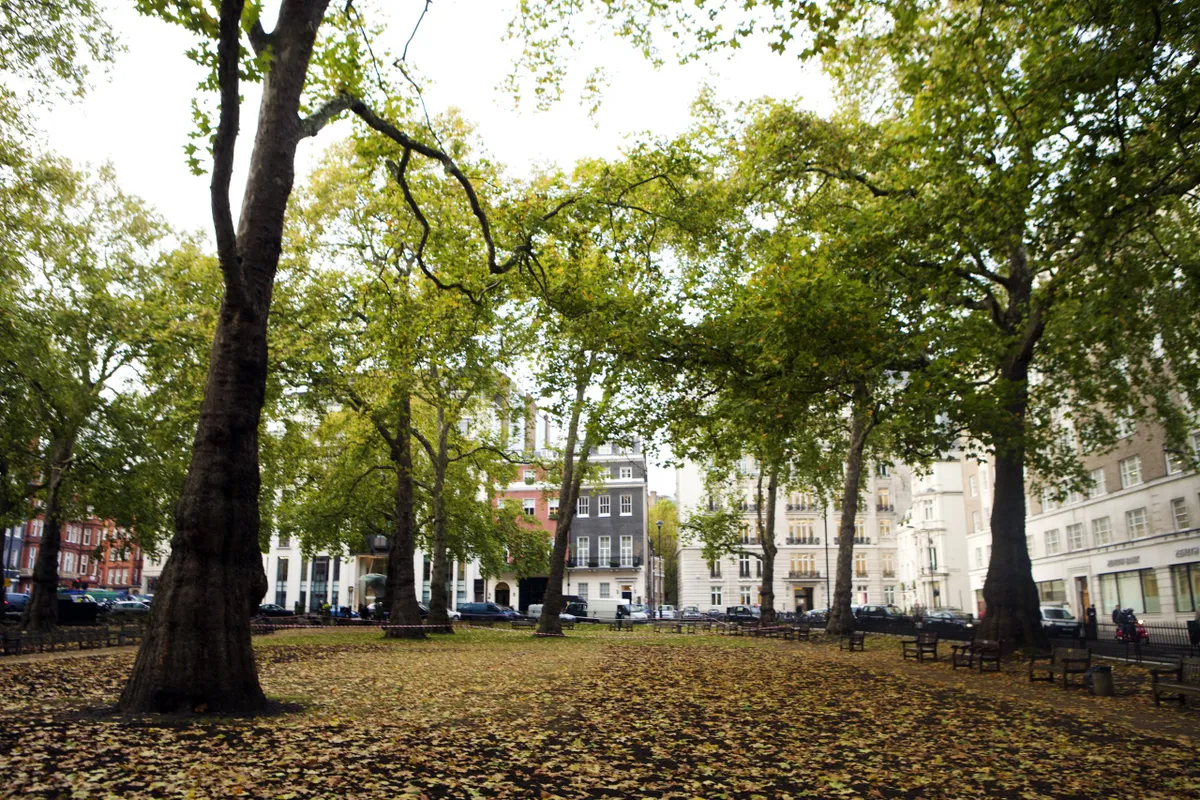
In Berkeley Square in the heart of Mayfair is a Victorian plane valued at a whopping £750,000. The tree, which has a 6ft wide trunk, is worth over three times as much as an average house and is around 70 times more expensive than an average street tree. The size, health, historical significance and local’s enjoyment of the tree, was taken into consideration when assessing its value.
Famous trees in Northern Ireland
The Dark Hedges, Stranocum, Co. Antrim
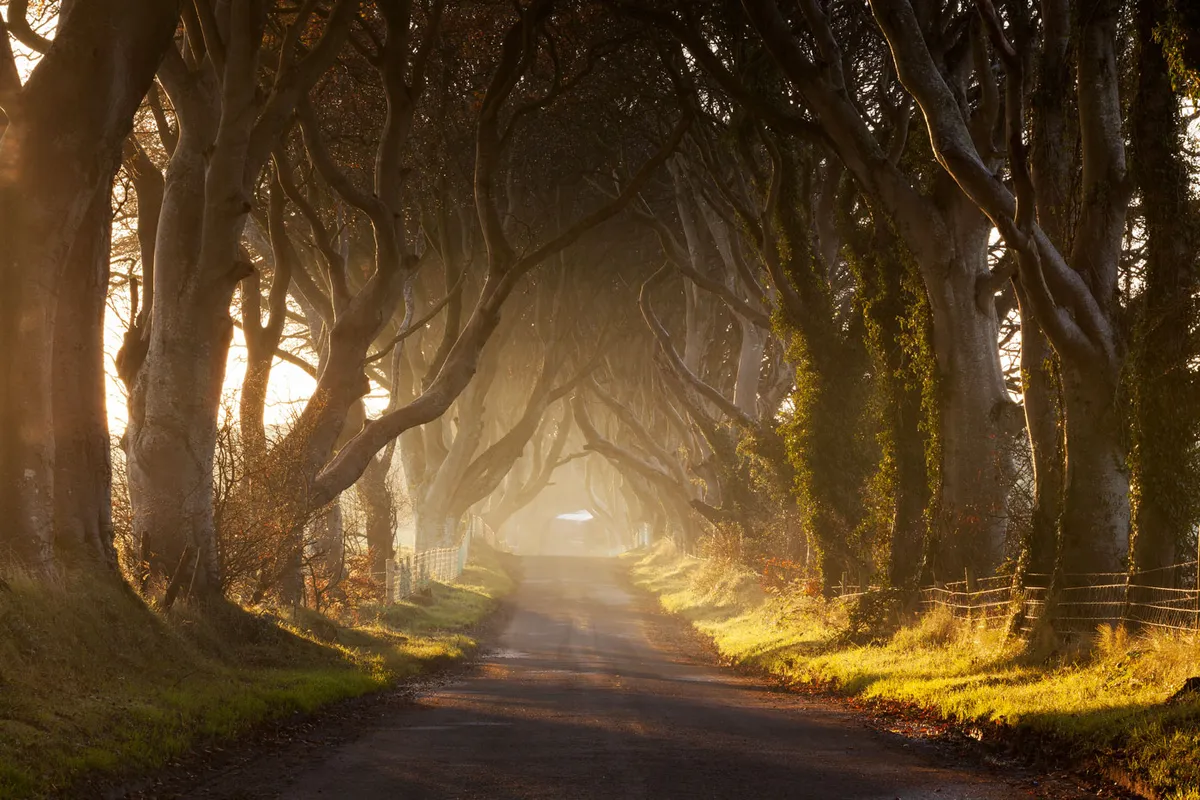
Possibly the most imposing and impressive tree avenue in the UK, these rows of beeches were planted by the Stuart family in the 18th Century. There’s something undeniably atmospheric and mystical about them, and many filmmakers have picked up on this including the Game of Thrones production team, who used them as a backdrop in the first series.
The Crom Yews, County Fermanagh
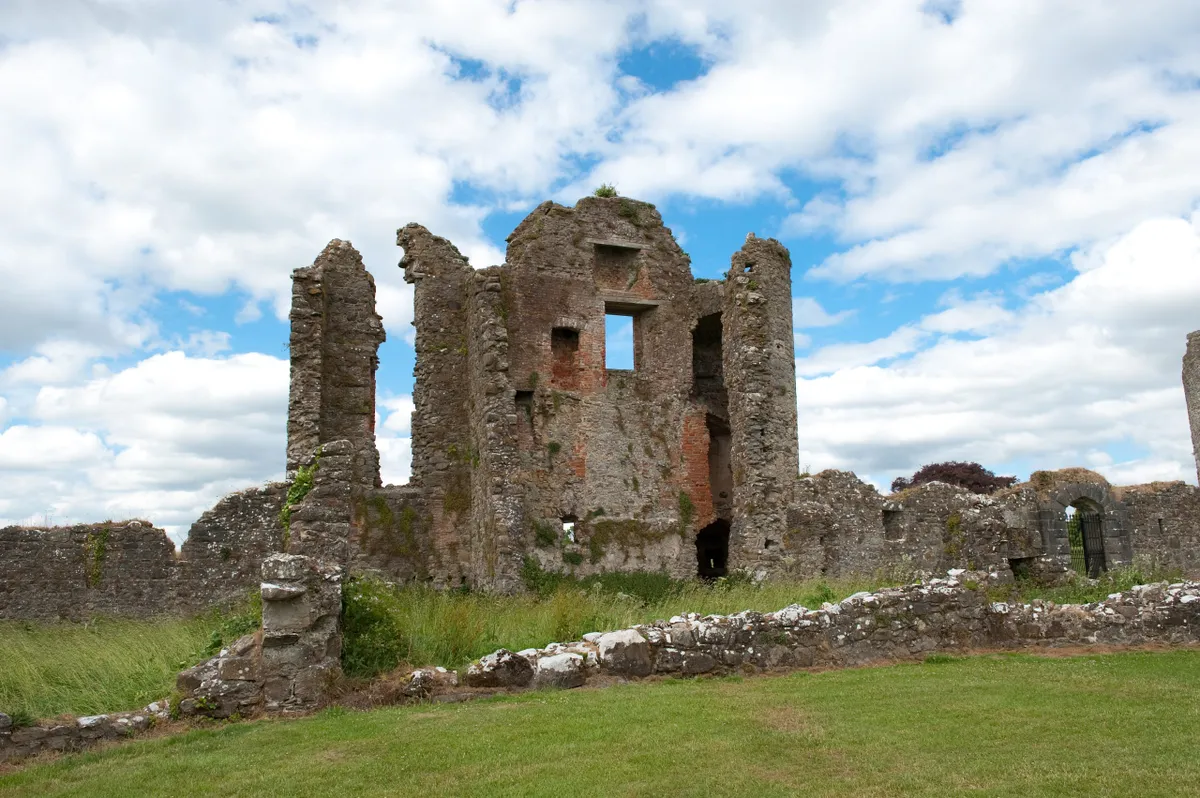
Near the ruins of Crom Castle in Northern Ireland are two old yews with twisting entwined branches. One of the trees is male, characterised by small yellow flowers whilst the other is female, with green flowers, which turn to red berries. It is thought that the trees were planted close together some time in the 17th century, and somehow grew knotted together.
Famous trees in Scotland
Isle of Spar, Loch Tay, Perthshire

A tall silver birch waves her burnished gold leaves under a crown of Scots pine on a tiny loch island in Tayside. The colours are vivid, the strong reds of the beech trees tangling with the russet branches of the pine. And lower down, rowan, birch and lichen complete the picture-postcard scene.
The man-made Isle of Spar is best seen from the eastern shores of Loch Tay, not far from the pretty village of Kenmore. We have the early inhabitants of Scotland to thank for creating the crannog, a defensive island-based dwelling, today home to this spectacular collection of trees. It was rebuilt in 1842 prior to a visit by Queen Victoria, and the trees and walling on the island are believed to date from this period.
Day out: Isle of Spar, Loch Tay, Perth and Kinross
Ardmaddy Wishing Tree, Argyll
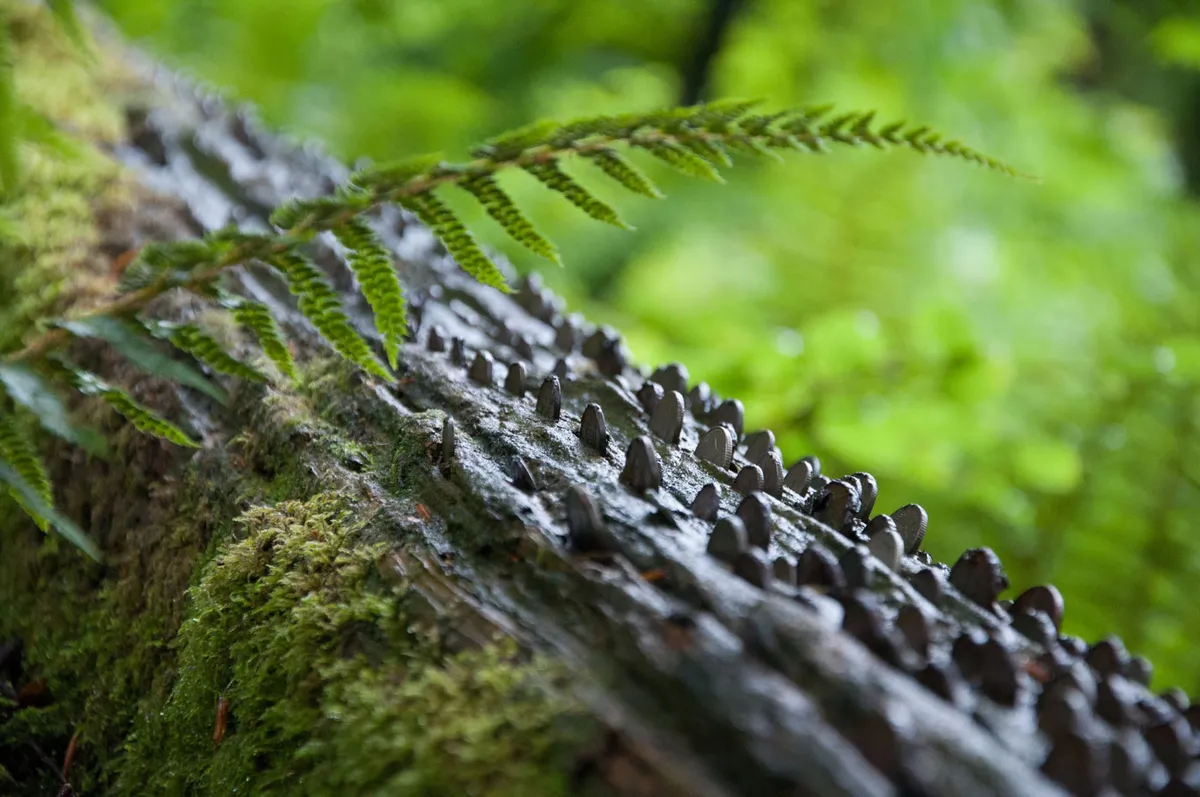
Near Ardmaddy Castle in Argyll is a rare example of a wishing tree. The Hawthorn variety was probably chosen because they were believed sacred in Celtic culture and had links with fertility. It is believed that if you made a wish or prayer, then embedded a coin into the bark, it would come true, consequently the trunk and branches are covered with hundreds of copper coins. Alternatively, make a wish then tie a strip of tartan cloth or ribbon around a branch as an offering to the spirits and fairies.
The Birnam Oak,, Birnam, Perth & Kinross
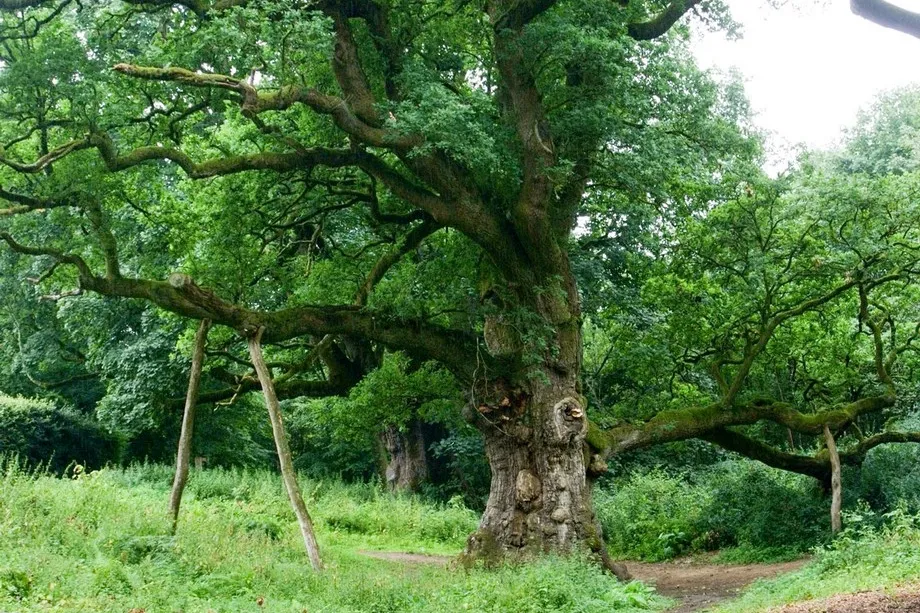
This ancient oak tree is said to be one of the last trees left of old Birnam Wood, the once great forest famously referred to in Shakespeare’s Macbeth. With its partially hollow trunk and lower branches resting on crutches, the very appearance of this tree is medieval.
Stronardron Douglas Fir, Argyll and Bute
Since it was planted by Archie Fletcher of Dunans castle in 1849, the Stronardron Douglas Fir has grown to a staggering 209ft making it the tallest tree in Britain. The old yew is taller than 15 double-decker buses piled on top of each other and would tower above Nelson’s column. Experts say that the tree is in good health and should continue to grow by about 12inches a year.
Famous trees found in Wales
The Llangernyw Yew, Conwy, Wales
This ancient tree is found in Conwy, Wales and thought to be around 4,000 and 5,000 years old.

